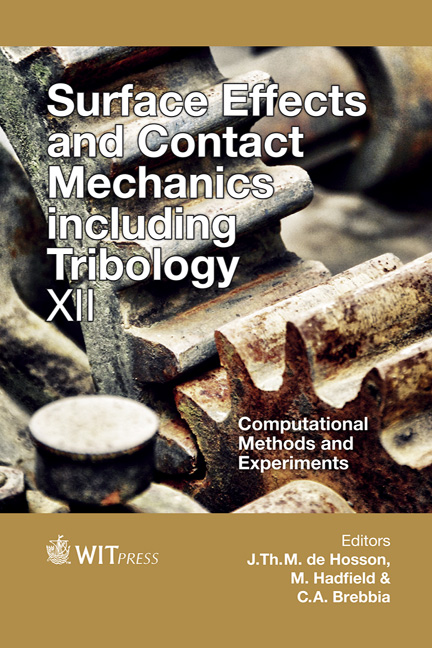Investigation Into Microstructural Changes Due To The Rolling Contact Fatigue Of The AISI M50 Bearing Steel
Price
Free (open access)
Transaction
Volume
91
Pages
11
Page Range
35 - 45
Published
2015
Size
1,353 kb
Paper DOI
10.2495/SECM150041
Copyright
WIT Press
Author(s)
L. Pritz, S. Marsoner, R. Ebner, R. Fluch, A. Tatschl, R. Münzer
Abstract
Roller bearings in aircraft turbines are commonly made of AISI M50 steel, because enhanced heat stability as well as highest reliability is required for this application. With a chemical composition of approximately 0.8 C, 4.0 Cr, 4.5 Mo, 1.0 V (all in wt.%) and using a specific vacuum melting and remelting technology for highest cleanliness M50 provides the best properties for such application. Despite some studies on this steel, there is still a lack of information on microstructural evolution during rolling contact fatigue (RCF). Hence, in order to get a better understanding of the microstructural evolution and as a consequence of the crack initiation, in the framework of this study a comprehensive set of experimental techniques were combined. For the RCF loading a so called ball-on-rod test was used. Microstructural alterations were analysed by various methods including optical light microscopy, confocal microscopy, scanning electron microscopy (SEM) with cross-sectional cutting by focussed ion beam (FIB), transmission electron microscopy (TEM) and microhardness measurements. Testing methods showed the build-up of a so-called white etching area (WEA) in a certain region below the raceway and the formation of butterfly-wings (BW) with micro-cracks at local microstructural inhomogeneity. Furthermore, all tested samples showed BW’s which initiated on carbides, often with micro-cracks near the boundary to the matrix.
Keywords
bearing steel, M50, RCF, rolling contact fatigue, fatigue crack initiation, WEA, butterfly wings





